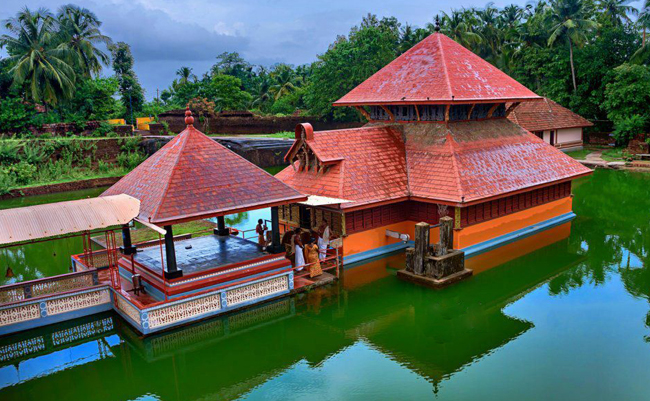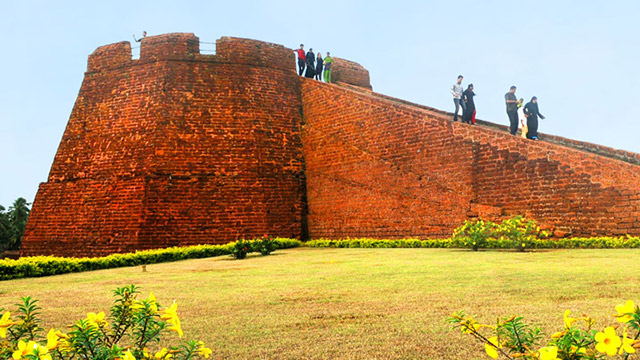Kasargod Fairvalue
Kasaragod District is located in the northern end of Kerala was formed on 24 May 1984. It comprises Hosdurg and Kasaragod taluks which were part of undivided Kannur District. This district is bordered on the east by Kodagu and Dakshina Kannada districts of Karnataka, the Arabian Sea in the west, and the Kannada District of Karnataka in the north. The district is bounded by the Kannur district.
People of Kasaragod District
Kasaragod District is the crown of Kerala State. Here, we can find people speaking many different languages, we have the history of invasion and resistance. The forts in this district have many testimonies, remaining of innovative culture like ‘Chenkallarakal’, ‘Nannangatikal’, ‘Muniyarakal’. The Western Ghats are filled with lush green highlands, midlands, the unique traditions and worship practice. This district is reputed for its practice of sharing the culture and languages. A group of trees of Kanjira which resembles the name Kasaragod. In a poem, the poet Linkanna uses the word Kasaragod as ‘Thullu Rajaraller Malerite’. In other words Kasaragod is termed as the land filled with lush green areca palm, coconut trees and bananas and hugged by beaches of Arabian Sea. Kasaragod is a place with rich history and heritage.
People Worship place
It is a place where human settlements are found from the period of the Great Stone Age. Chenkal areas located in the midlands of the district are examples of people living here for a long period. The ancient humans who lived in this district used pottery, copper and ancient ironworks to provide the hints. They worshiped agriculture and nature as their god. The main tribes living in this district are Korangar, Malakkudi, Mavilar, Koppalar and Malavattu are only seen. Tribal people like Velan, Kadaan, Narasanar, Madigar, Bakur, Moger and Pulaiyar are also found for generations of their tribal forefathers. The Adi Tribes had dominated worship places which can be seen in this district. People who followed Buddhism and Jainism also had important places of worship.
Vijayanagar Empire rule
During the rule of Kolathiri King who had Nileswar as his headquarters. So, Vijayanagar Empire attracted Kasargod during the battle. The ritualistic folk dance of northern Kerala and the characters appearing in Theyyam represent those who had helped king Kolathiri by fighting against the attack of the Vijayanagar Empire. The administration of this area was vested with the Ikkeri Naikans. They continued it till the Vijayanagar Empire in 16th century and then Vengappa Naik declared independence to Ikkeri. During the period of the Ezhimala dynasty Nandan Maha Raja ruled Kasargod. This region was developed from Gudalur to the north of Coimbatore. Kasaragod became a part of Kolathiri ruled by the Muthu Dynasty in the 14th century. The king was known as Kolathirimar.

Ananthapuram Temple
When the Vedic religion entered Kerala through Konkan and Tulu, they were very strong during the period of Sankaracharya. As part of the Dwaita-Advaita dialog, the Madhavacharya and three-prince scholars from Koodlu Upadhippi, near Kasaragod. The word Koodlu originated from Kootil. The only lake temple in Kerala is Anantha Padmanabhaswamy temple in Ananthapuram near Kumbla. This temple is considered as the Moolasthana (place of origin ) of the Sri Padmanabha Swamy Temple. Ananthapuram Temple is also known as Swamy Thapassan. Many Arab travelers came to Kerala between 9th and 14th centuries AD, visited the Kasargod district as it was an important trade centre. This place is called Harkwillia. In the year 1514, the Portuguese traveler Mr Barbose visited Kumbla near Kasargod and recorded that rice was exported to Male Island where coir was imported. In 1800, Lord Wellesly’s family doctor Fracis Buccanan visited this district and gave the information about the political and communal set-up in places like Athiparamba, Kavvai, Nileshwar, Bekkal, Chandragiri and Manjeshwar. Kasargod district was part of Kumbala Kingdom in which there were 64 Tulu and Malayalam villages.
Srirangapatnam Agreement
Mysore Sultan, Hyder Ali invaded the Ikkeri dynasty and conquered the fortresses of Malabar in 1763. He failed to capture the Thalassery fort and returned to Mysore and died in 1782. Later Tipu Sultan, son of Hyder Ali, conquered Malabar and gave up on the basis of the Treaty of Srirangapatnam with the British. He died in 1799. In 1800, Lord Wellesley deputed Francis Buchenan to visit the territory of the English East India Company to study the region including Mysore under the Srirangapatnam agreement. In 1801, he visited Kavvayi, a place near the southern edge of this district. He went back to Mangalapuram and refers to the ancient social, cultural and political life. In 1804, British India colonized the Neeleswaram and Kumbhala dynasties. On 16 April 1862, the South Canara district became a part of the Madras province. Now, this area became Kasaragod district and moved to Kasaragod taluk. The status continued until the creation of the state of Kerala in 1956 after independence.

Construction of Bekal Fort
When Vijayanagara Empire began to decline by the end of Thalikkotta War in the year 1565. It was divided into provinces and ruled by the provincial kings. Ikkeri Naika Dipriya was the kind of dynasty also known as Kelji Naikkaka DTP. Some areas of Ikkeri Naikka Tipas were included in the northern part of Kasaragod and part of Karnataka, including Udupi and South Kannada districts. Bekal was created to establish the dominance of Malabar. A fort was built at Bekal for considering the economic importance of the security of the province. The fort was constructed during Shivappa Naik period. The Chandragiri Fort was also constructed during the same time.
After independence
During Independence, the area of the Kasaragod district was on the southern edge of Karnataka and part of Madras state. When the states were reorganized on the basis of linguistics, Kasaragod taluk was split from the southern Karnataka region and merged with Malabar district and the state of Kerala was formed on 1 November 1956. Later, Malabar was divided into three districts namely Kannur, Kozhikode and Palakkad on 1 November 1957. The division of Kasaragod and Hosdurg Taluk were divided into Kannur district. Later, the Kannur district revenue division was established and included in the Kasaragod and Taliparamba taluk which was earlier part of the Thalassery Revenue Division.
Municipalities and Taluks
EMS Namboodiripad, the first Chief Minister of Kerala was elected from the Nileswaram constituency in Kasaragod district. Kasaragod and Manjeswaram Taluks divided by Kasaragod taluks and Hosdurg taluk split into Hosdurg and Vellirikunnu taluks on 28 May 2013. The three municipalities namely Kasaragod, Kanhangad and Neeleswaram were formed. The Kasaragod municipality was formed on 15 August 1966, Kanhangad municipality on 1 June 1984 and Neeleswaram municipality on 1 November 2010.
